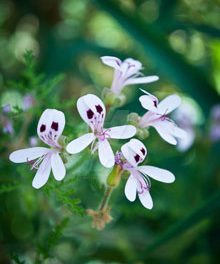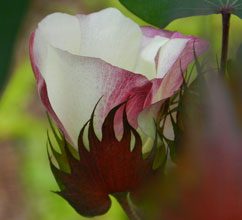 Members of the heath family typically love acidic, well-drained soils, high in organic matter. Ericaceae is a large family with around 4000 species and includes Rhododendrons, azaleas, blueberries, and it also includes the parasitic Genus Monotropa or Indian Pipes. Edible berries, lovely flowers, and outstanding fall color make the blueberries a noteworthy choice for landscaping.
Members of the heath family typically love acidic, well-drained soils, high in organic matter. Ericaceae is a large family with around 4000 species and includes Rhododendrons, azaleas, blueberries, and it also includes the parasitic Genus Monotropa or Indian Pipes. Edible berries, lovely flowers, and outstanding fall color make the blueberries a noteworthy choice for landscaping.
Twigs, leaves and buds can be red, green, purple, or pink. Blueberries are found in a variety of habitats from streams and woods, to marsh thickets and high mountain balds. Depending on the species they can be used in mixed borders, foundations, or as specimens. Most of them do need another variety for cross pollination and fruit production. Probably the most familiar to home gardeners is the highbush or rabbiteye blueberry, Vaccinium corymbosum, deciduous or semi-evergreen, clump forming and bred for fruit production; it can be grown as an informal shrub which needs acidic soils. Before planting check the pH, and keep it around 5-5.5. This is crucial to the health of the plant and its landscape appeal.
How many blueberries are there? The Clemson Home and Garden fact sheet lists six early season rabbiteye varieties, three midseason, and only one late season that will get the chill hours (400-600 hours of winter temperature below 45°F) required for the best fruit production.
There are also Southern Highbush blueberries that are hybrids derived from V. corymbosum and V. darrowi. These are generally self-fruitful and have a lower chill requirement than rabbiteye. The Clemson fact sheet lists six early season and two midseason cultivars. It is also noted that better fruit production is gained when several cultivars are interplanted. The names of these trademarked and patented selections are definitely endemic: Georgia Dawn TM, Palmetto, Rebel, Southern Slendour, Blue SuedeTM, Summer SunsetTM, Suziblue, and Camellia. Lowbush blueberries can be used in natural woodland gardens and as dwarf shrub groundcover. Dr. Larry Mellichamp Native Plants of the Southeast, describes seven species as noteworthy, and there are named varieties as well. Form is the most important factor in choosing plants for low maintenance and aesthetic consideration. They need light for the best bloom and fall color. Growing outward from the mother plant these suckering shrubs are found in open woods and will support many birds and other wildlife. Mayberry, V. elliottii, is named for a famous SC botanist, Stephen Elliott. It has small tiny leaves and slender arching stems. Evergreen or shiny blueberry, V. myrsinites, is a dwarf which can be grown in full sun (in Charlotte, NC). Deerberry grows 3-4’, and has the most adorable white open petals which hang down like ballerina skirts, and inedible clusters of greenish purple berries. The largest Vaccinium is sparkleberry V. arboretum is sometimes called fondly “farkleberry”, and Dr. Mellichamp calls it the “holy grail of the genus.” The dark shiny berries are not juicy and pretty seedy. It would take a lot of them to make a pie, but they are wonderful food for wildlife. The white pantaloon flowers hang down, in abundance ,and are an important nectar and pollen source for honeybees and other pollinators. The reddish trunks and branches are contorted foils to small green leaves.
Muffins, pies, lovely fall color, flowers, buds, and interesting forms make blueberries a perfectly yummy addition to your landscape.
Check out the fact sheet on blueberries and other landscaping information http://www.clemson.edu/extension/hgic/
http://www.clemson.edu/extension/hgic/plants/pdf/hgic1401.pdf





